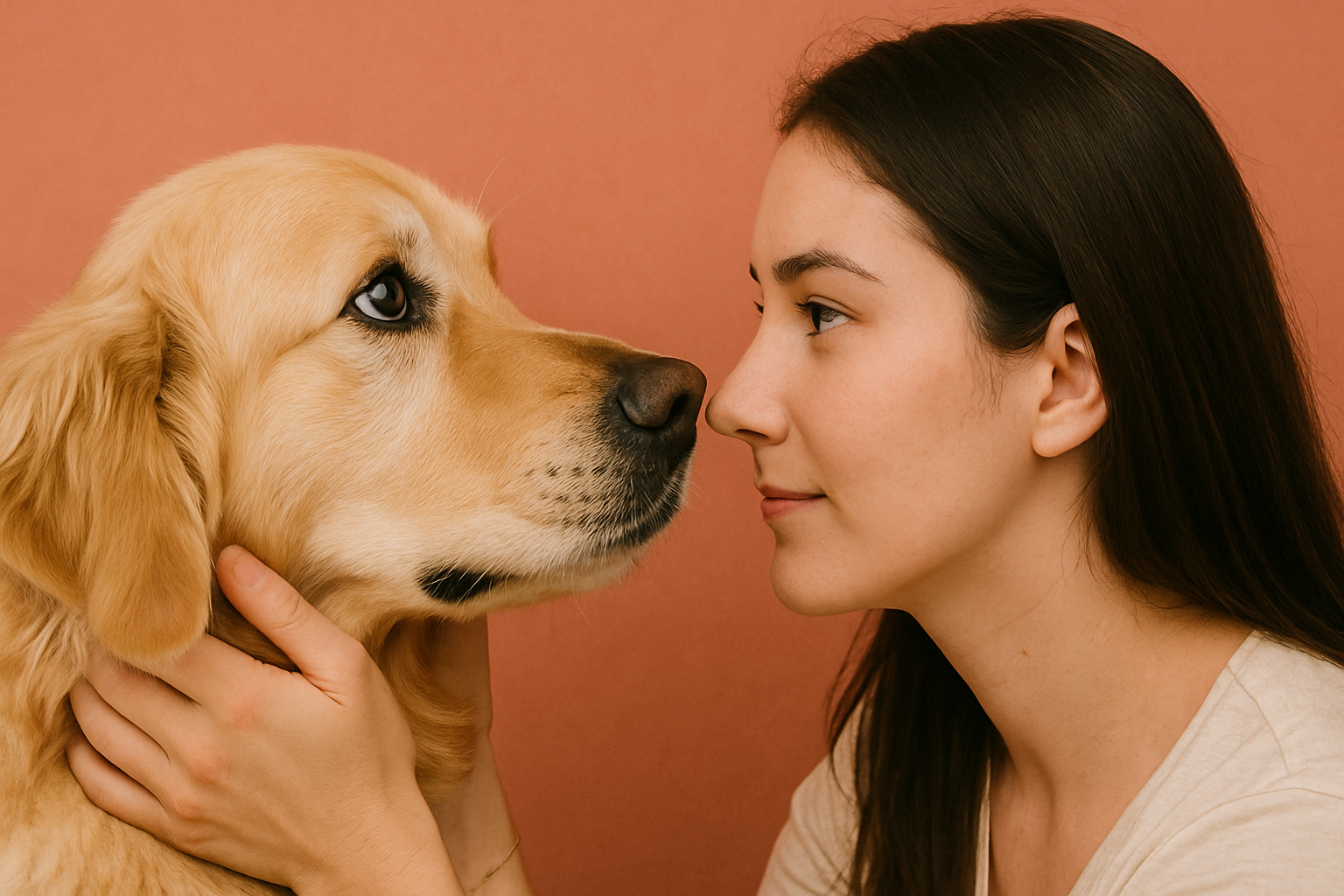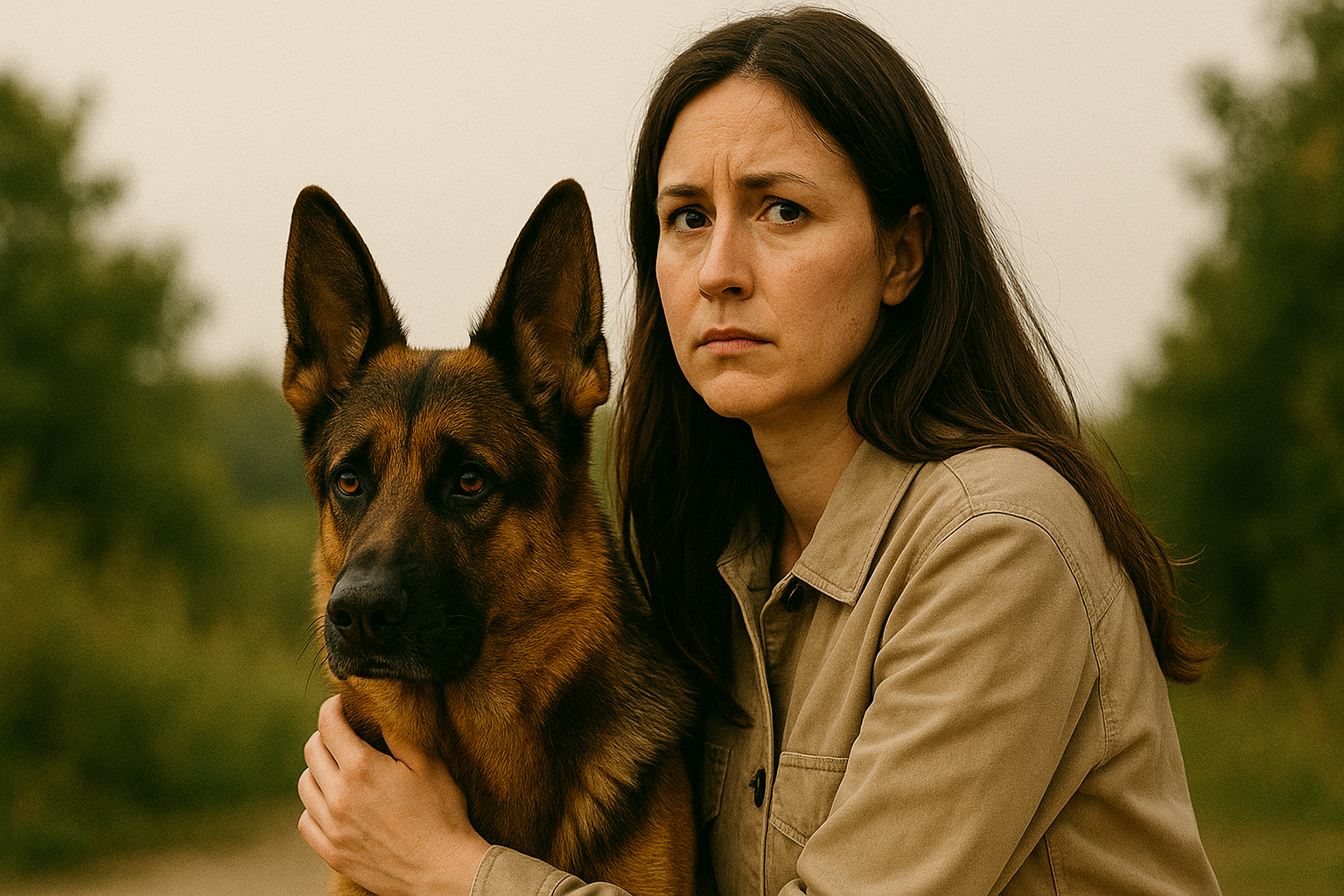10 Surprising Ways Your Pet Chooses You: The Science of Bonding
Have you ever experienced that magical moment when a pet seems to pick you out of a crowd, as if they just know you’re meant to be together? Whether it’s a dog leaning into you at the shelter or a cat curling up in your lap, these moments feel special—and science reveals they’re more than just coincidence. The bond between humans and their pets is a fascinating interplay of biology, psychology, and emotion. Here are 10 surprising ways your pet picks you as their trusted companion, blending heartwarming moments with the biology and psychology behind those special bonds.
1. Scent Recognition: Your Unique Smell Seals the Deal
Scent is the secret language of the animal world, and it plays a pivotal role in how pets choose their people. Dogs, for example, possess up to 300 million olfactory receptors—an astonishing number compared to humans’ modest 6 million. This supercharged sense of smell allows them to detect subtle chemical cues in your sweat, pheromones, and even your diet. When a dog sniffs you and decides to stay close, it’s because your scent feels familiar, comforting, and safe.
Cats, too, are scent-driven creatures. They have scent glands on their cheeks and heads, which they use to mark their territory—including you! When your cat rubs against your legs or face, they’re not just seeking affection; they’re claiming you as “theirs.” This olfactory bond forms one of the earliest and most powerful ways your pet decides you’re their person.
The Science Behind Scent Bonding
- Olfactory memory: Pets remember people and places primarily through scent, which is why your dog may greet you enthusiastically even after a long absence.
- Chemical communication: Dogs and cats can detect emotional states through pheromones, making them sensitive to your mood and stress levels.
- Territorial marking: Cats’ scent-marking behavior isn’t just about territory—it’s about social bonding and comfort.
2. Eye Contact: The Oxytocin Connection

Have you ever noticed your dog gazing lovingly into your eyes, or your cat giving you a slow, deliberate blink? These actions are more than cute—they’re rooted in the chemistry of bonding. A groundbreaking study from Japan’s Azabu University found that mutual eye contact between dogs and their owners triggers a release of oxytocin, the “love hormone,” in both parties. This hormone is the same one responsible for the deep bond between human parents and their infants.
For cats, the slow blink is a sign of trust and affection. When your cat slowly closes and opens their eyes while looking at you, they’re signaling that they feel safe and content in your presence.
Key Points
- Oxytocin release: Eye contact boosts oxytocin, deepening the emotional connection.
- Trust signals: Dogs’ loving gazes and cats’ slow blinks are clear signs they’ve chosen you as their safe haven.
3. Mimicking Your Behavior: Syncing Up with You
One of the most surprising ways pets show their bond is by mirroring your behavior. Dogs are especially adept at this, often matching your walking pace, sleep schedule, and even your emotional state—a phenomenon known as “behavioral synchrony”. If you’re energetic, your dog may become more playful; if you’re feeling down, they might become subdued and offer comfort.
Cats, though more independent, also engage in subtle mimicry. You might notice your cat lounging where you sit, following you from room to room, or adopting your daily routines. This behavioral alignment is their way of signaling trust and companionship.
The Science
- Social learning: Pets observe and learn from your actions, adjusting their behavior to fit in with your lifestyle.
- Emotional mirroring: Dogs and cats can pick up on your mood and reflect it back, strengthening your bond.
4. Vocal Cues: They Love the Sound of Your Voice
Your voice is more than just background noise to your pet—it’s a source of comfort and familiarity. Studies show that dogs can distinguish their owner’s voice from that of strangers and respond more positively to familiar tones. The pitch, rhythm, and cadence of your speech create a sense of safety, helping your pet feel secure.
Cats, too, recognize their owner’s voice and may respond with meows, purrs, or head bumps. Even if your cat doesn’t always come when called, they’re still attuned to the unique sound of your voice.
Why Voice Matters
- Recognition: Pets learn to associate your voice with positive experiences like feeding, play, and affection.
- Emotional connection: The way you speak to your pet can reinforce your bond, especially when using a gentle, soothing tone.
5. Touch and Physical Contact: The Power of Pets and Pats

Physical touch is a universal language of love and trust. When you pet your dog or scratch your cat’s favorite spot, you’re not just pampering them—you’re reinforcing a deep bond. Research shows that gentle petting reduces stress hormones like cortisol in dogs while increasing oxytocin, making them feel calm and happy.
Cats also respond positively to touch, often purring, kneading, or curling up in your lap when they feel safe. By seeking out your touch, your pet is actively choosing you as their source of comfort and security.
The Benefits of Touch
- Stress reduction: Physical contact lowers anxiety in pets and humans alike.
- Bond reinforcement: Regular touch builds trust and strengthens your relationship.
6. Emotional Resonance: They Feel What You Feel
Pets are remarkably attuned to human emotions. Dogs, for instance, can read facial expressions and body language, responding to your happiness or sadness. A 2016 study found that dogs can distinguish between happy and angry human faces, adjusting their behavior to comfort or protect you.
Cats, while less expressive, are also sensitive to your emotional state. Many cat owners report their feline companions staying close during times of stress or illness, offering silent support and companionship.
How Emotional Resonance Works
- Empathy: Pets can sense your mood and respond accordingly, providing comfort when you need it most.
- Shared experiences: The emotional connection between you and your pet deepens over time, making them more attuned to your needs.
7. Playtime Preferences: Choosing You for Fun
Play is more than just entertainment for pets—it’s a vital part of bonding. When your dog brings you their favorite toy or your cat chases a feather wand you’re holding, they’re choosing you as their playmate. Research shows that dogs prefer playing with their owners over strangers, associating you with positive, rewarding experiences.
Cats may bring you toys or initiate play sessions, signaling that you’re their chosen companion for fun and excitement.
The Role of Play
- Positive reinforcement: Play strengthens the bond and reinforces your role as a trusted companion.
- Mental stimulation: Engaging in play keeps your pet happy, healthy, and mentally sharp.
8. Trust Through Routine: You’re Their Predictable Safe Space
Pets thrive on routine, and you become a central part of their daily rhythm. Feeding times, walks, and bedtime rituals create a sense of security that ties your pet to you. A 2017 study found that consistent routines reduce anxiety in dogs, making them more likely to seek out their owner for comfort.
Cats also rely on predictable interactions, such as regular feeding times and play sessions, to build trust and security.
Why Routine Matters
- Safety and predictability: Routine helps pets feel safe and reduces stress.
- Attachment: By being their reliable caregiver, you become the one they choose to depend on.
9. Protective Instincts: They’ve Got Your Back

Some pets express their bond by showing protective behaviors. Dogs, in particular, may position themselves between you and strangers, bark to alert you to potential threats, or even physically shield you. This stems from their pack mentality, where they see you as part of their family.
Even cats, though less obvious, can display protectiveness by staying close during unfamiliar or stressful situations, signaling that they’ve chosen you as their trusted ally.
The Science of Protection
- Pack behavior: Dogs’ protective instincts are rooted in their evolutionary history as pack animals.
- Bond strength: The more bonded your pet is to you, the more likely they are to act protectively.
10. Gut Instinct: The Mysterious “Sixth Sense” of Bonding
Sometimes, the way a pet chooses you feels almost mystical. Stories abound of shelter animals instantly connecting with one person, ignoring others. While science can’t fully explain this phenomenon, it likely involves a combination of scent, body language, and subtle cues. A 2021 study suggested that dogs and cats may use “social referencing,” assessing your reactions to new situations to guide their own behavior.
This instinctual connection often feels like fate—a magical moment when your pet decides you’re the one.
What’s Behind the “Sixth Sense”?
- Social referencing: Pets look to you for cues on how to react in unfamiliar situations.
- Intuitive connection: Sometimes, the bond defies explanation, rooted in a deep, instinctual understanding.
The Science of Pet-Human Bonding: A Closer Look
To truly appreciate the depth of the pet-human bond, it’s helpful to explore the scientific research behind these behaviors. Here’s a summary table of key studies that illuminate how pets choose their people:
|
|
|
|
|
|
|
|
|
|
|
|
|
|
|
|
|
|
|
|
|
|
|
|
|
|
|
|
|
|
|
|
|
Building and Strengthening the Bond
Understanding the science behind pet bonding can help you nurture an even deeper connection with your furry (or feathered) friend. Here are some practical tips to reinforce your bond:
- Spend quality time together: Engage in regular play, walks, or cuddle sessions.
- Maintain routines: Consistency in feeding, exercise, and affection builds trust.
- Communicate with your pet: Use gentle tones, eye contact, and positive reinforcement.
- Respect their boundaries: Allow your pet to approach and interact at their own pace.
- Stay attuned to their needs: Pay attention to changes in behavior or mood, and respond with empathy.
Conclusion: A Bond Beyond Words
The connection between you and your pet is a beautiful blend of biology, behavior, and emotion. From the way they recognize your scent to the trust built through daily routines, your pet chooses you through a series of subtle, scientifically fascinating behaviors. This bond is not only heartwarming but also rooted in a rich tapestry of evolutionary and psychological mechanisms. Next time your pet curls up beside you or brings you their favorite toy, know that they’ve chosen you—and the science behind it only makes that bond more special.
References:
University of Veterinary Medicine, Vienna (2016). Dogs can read human emotions.
Behavioural Processes (2018). Olfactory recognition in dogs.
Applied Animal Behaviour Science (2020). Feline scent marking and bonding.
Scientific Reports (2019). Personality mirroring in dogs and owners.
Animal Cognition (2014). Dogs and human voice recognition.
Animal Behaviour (2013). Cats recognize owner voices.
Animal Behaviour (2018). Dogs prefer playing with owners.
PLOS One (2019). Protective behaviors in bonded dogs.
Science (2015). Oxytocin release in dog-human gaze.
Scientific Reports (2020). Cat slow blinking and trust.
Physiology & Behavior (2016). Oxytocin and petting in dogs.







